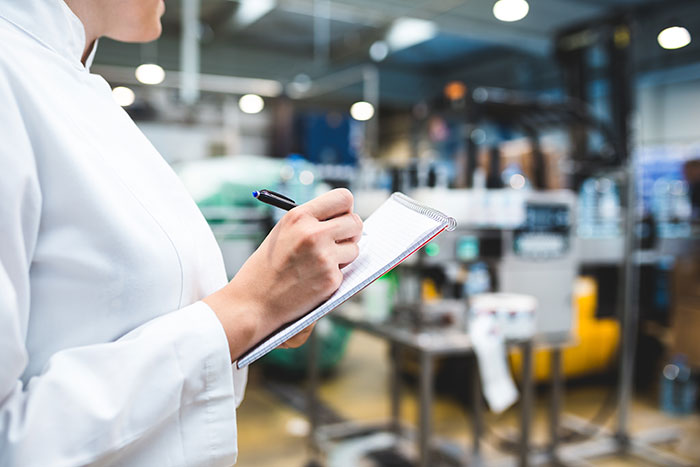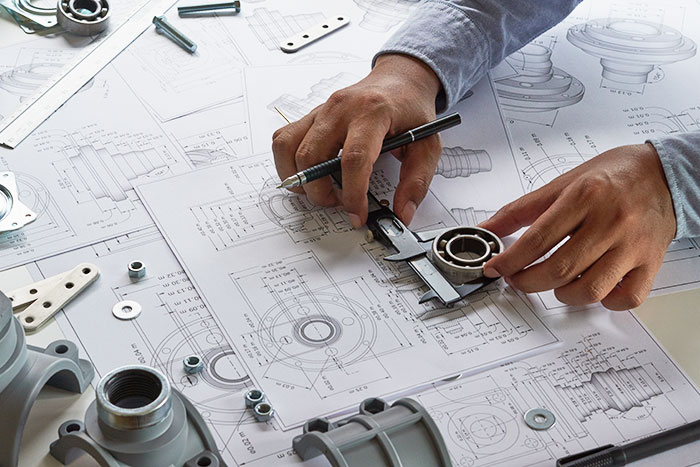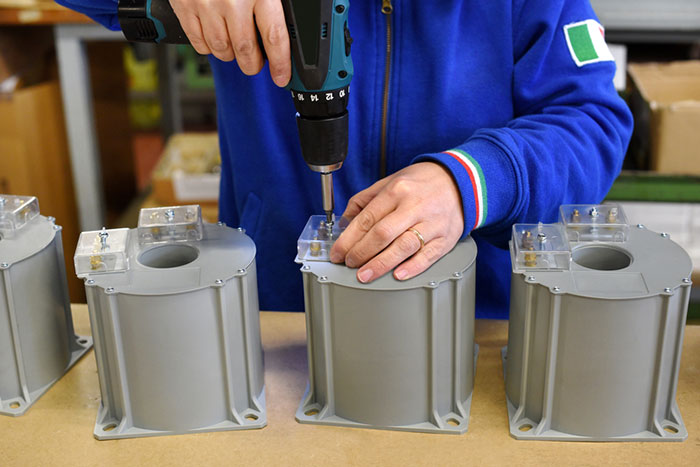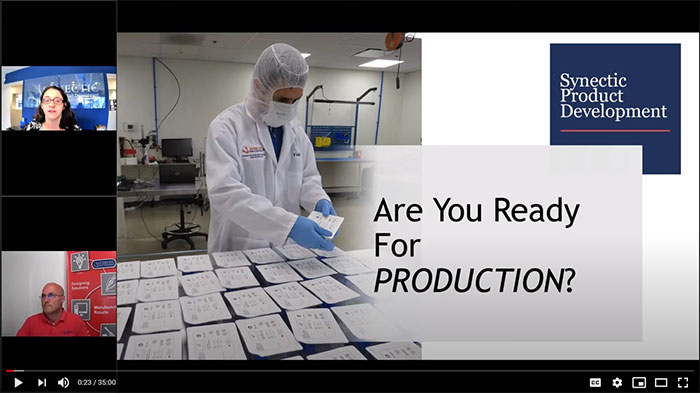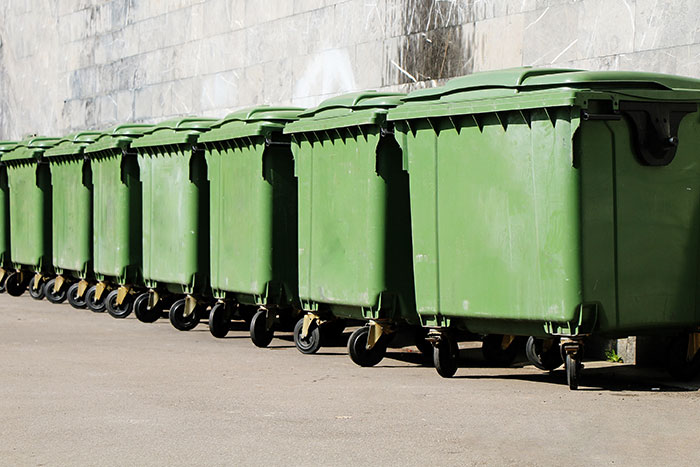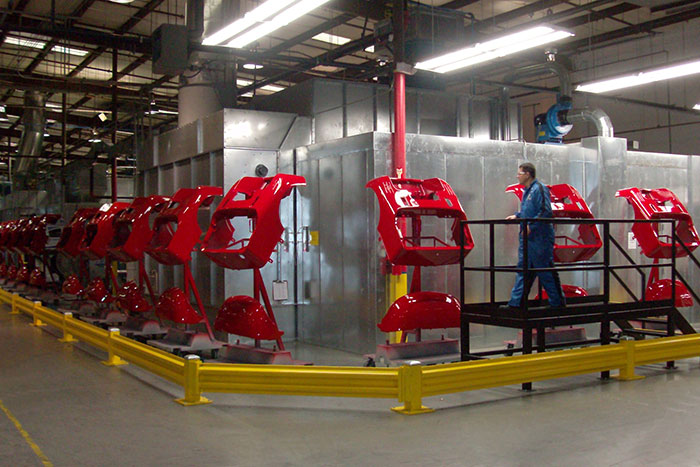
Finishing involves altering the surface of a manufactured part to achieve the desired appearance or make it easier to bond with or provide durability. The finishing processes used on the manufactured part all depend on the part’s material, whether it be plastic or metal. The correct finishing processes for the part are chosen based on costs and part specifications. Before deciding on a finishing process for your part, here are some things you should know first.
How to finish plastics
After the plastic parts have completed their plastic injection molding production run they go through three finishing steps. First, the parts need to be degated second, deflashed, and finally cleaned. Degating removes the marks from the gates where the thermoplastic entered the mold cavity on the part. Deflashing removes all the excess material around the part and reduces imperfections on the plastic part. Cleaning is the final step and makes the surface free of contaminants.
If the plastic part is part of a larger assembly of pieces, then there are a few different options to attach the pieces. The plastic can be mounted using traditional hardware, a chemical bonding agent, or ultrasonic welding.
Types of plastic finishes
Plastics can receive a wide variety of finishes based on their aesthetic needs or specifications. If the part needs labeling, such as branding or logos, many options available for applying these markings to parts. Choosing a marking method depends on the durability of the markings and cost limitations, as some methods can be more expensive. Some viable methods to achieve markings on plastic parts include:
Silkscreen printing
Silkscreen Printing involves ink directly transferring from a silkscreen onto the plastic part.
Heat transferring
Heat transfer happens when a heat transferable label or marking is applied to a plastic part using heat and pressure.
Hot stamping
During hot stamping, a hot metal stamping die is pushed into a plastic part, leaving a marking in the shape of the die.
Engraving and etching
Engraving and etching physically mark a plastic part, but engraving is done with a laser or CNC, while etching uses chemicals.
Pad printing
Pad printing is similar to heat transfer and silk screening but uses pads that pick up ink from an etched surface and push the design onto the plastic part.
Coating
The coating process uses a UV powder that is electrostatically applied to the surface of the plastic part and cured using UV light.
Types of metal finishes
Metal finishing is a much more involved process than plastics because metal is more vulnerable to corrosion. Depending on the application of the metal part, some parts may need more extensive finishing than others. Metals can also be painted, etched, and engraved similarly to plastics. There are three main metal finishing processes and several other surface finishing processes such as:
Electroplating
Electroplating involves plating a metal part by passing an electric current through a solution with dissolved ions of the desired metal inside. This process works because the metal part serves as a cathode; the metal ions are then attracted to and stick to the part. A wide variety of products use electroplating, from jewelry to the automotive industry.
Electroless plating
Electroless plating is very similar to electroplating, except that the metal coating is deposited onto the part using chemical reactions instead of electricity. Electroless plating is also used in a variety of products, such as hard drives.
Chemical/Electrochemical conversion
Chemical/Electrochemical conversion deposits a protective or decorative coating onto the metal part. Chromating, anodizing, passivation, phosphating, and metal coloring all fall into this category. Chromating uses hexavalent chromium to deposit a protective coating on metal surfaces and is often used on car parts to make them reflective. Anodizing immerses the part in a solution with metal salts or acids that react and form an insoluble metal oxide, providing corrosion resistance. Passivation involves immersing the part in an acid solution to prevent corrosion and extend part longevity. Phosphating prepares a metal surface for painting by coating it with a spray or immersing it in a phosphate material such as zinc phosphate. Metal coloring is when chemicals are applied to the metal part to change the color of the surface.
Cladding
Cladding is when a metal part requires a thicker outer coating that cannot happen via electroplating. The most common example of cladding are coins, such as the quarter, where metal is squished, using a combination of heat and pressure, between two alloy pieces.
Case hardening
Case hardening involves heating and quenching the surface of the metal, creating a hard outside over a malleable metal inside. Objects subjected to high pressures and impacts, such as engine camshafts, use case hardening.
Galvanizing
Galvanizing is primarily applied to iron and steel parts to protect the metal from corrosion. It involves dipping the part in a molten bath of zinc compounds that immerse the part and create a coating. Galvanizing is one of the cheapest methods to finish metal because it is easy to do and does not provide a very polished finish.
Electropolishing
Electropolishing uses acid or alkaline solution to smooth the surface of a metal part by conforming to the contours in a process similar to electroplating. The exception is that the part acts as the anode instead of the cathode. Electropolishing can enhance corrosion resistance and improve biocompatibility for medical applications.
Metallic coatings
Metallic coatings are applied to the surface of base metals to provide protection and corrosion resistance. The process can be applied using various methods such as vapor deposition or cladding. The two materials interlace because they are brought together at high temperatures. Common metallic coating metals include aluminum, tin, zinc, and lead.
Metal painting techniques
Painting of metal parts can happen in three different ways, e-coatings, powder coatings, and liquid coatings. Each coating type has its advantages like cost, durability, or aesthetics.
E-coating
E-Coating, also known as electrophoretic deposition, is where a metal part is dipped into a liquid paint bath and then electrified to adhere to it. The thickness of the coating is highly adjustable because the amount of adhesion depends on the amount of electricity applied to it. This coating method is most commonly used to reach hard-to-access spots, topcoat, and primer applications.
Powder coating
Powder coating is one of the most efficient painting methods out there because an even amount of painting material is applied throughout the surface of the metal part. Electrostatically charged powder creates adhesion to the part surface. Powder coating has excellent durability and scratch resistance which means it is perfect for applications on tire rims and other automotive parts.
Liquid coating
Liquid coating is essentially just regular paint applied wet and left to dry. Liquid coatings are ideal for situations where a specific color is needed, the coating needs to be smooth, or there is a lot of color variation. Liquid coating continues to be the most popular method for finishing metal parts, but powder coating and e-coating are starting to catch up.
The possibilities for finishing your parts are seemingly endless. If you are unsure which finishing process would be the best for your project or would like some expert manufacturing advice, contact us below and we would be happy to help.
Need Finishing and Painting?
About Synectic Product Development: Synectic Product Development is an ISO 13485 certified, full-scale product development company. Vertically integrated within the Mack Group, our capabilities allow us to take your design from concept to production. With over 40 years of experience in design, development, and manufacturing, we strive for ingenuity, cost-effectiveness, and aesthetics in our designs. Learn more about our contract manufacturing services and see how we can help your next project.
